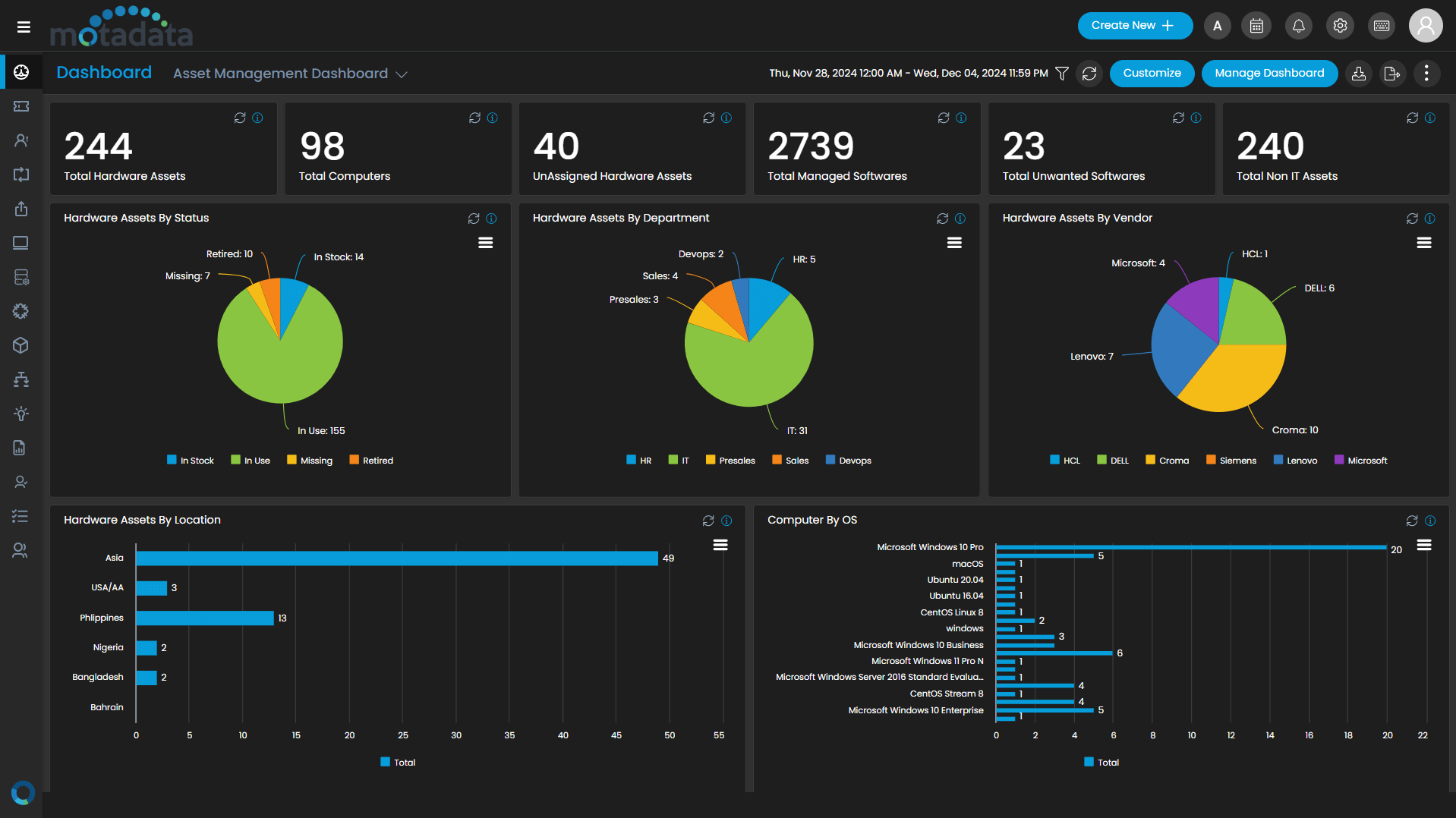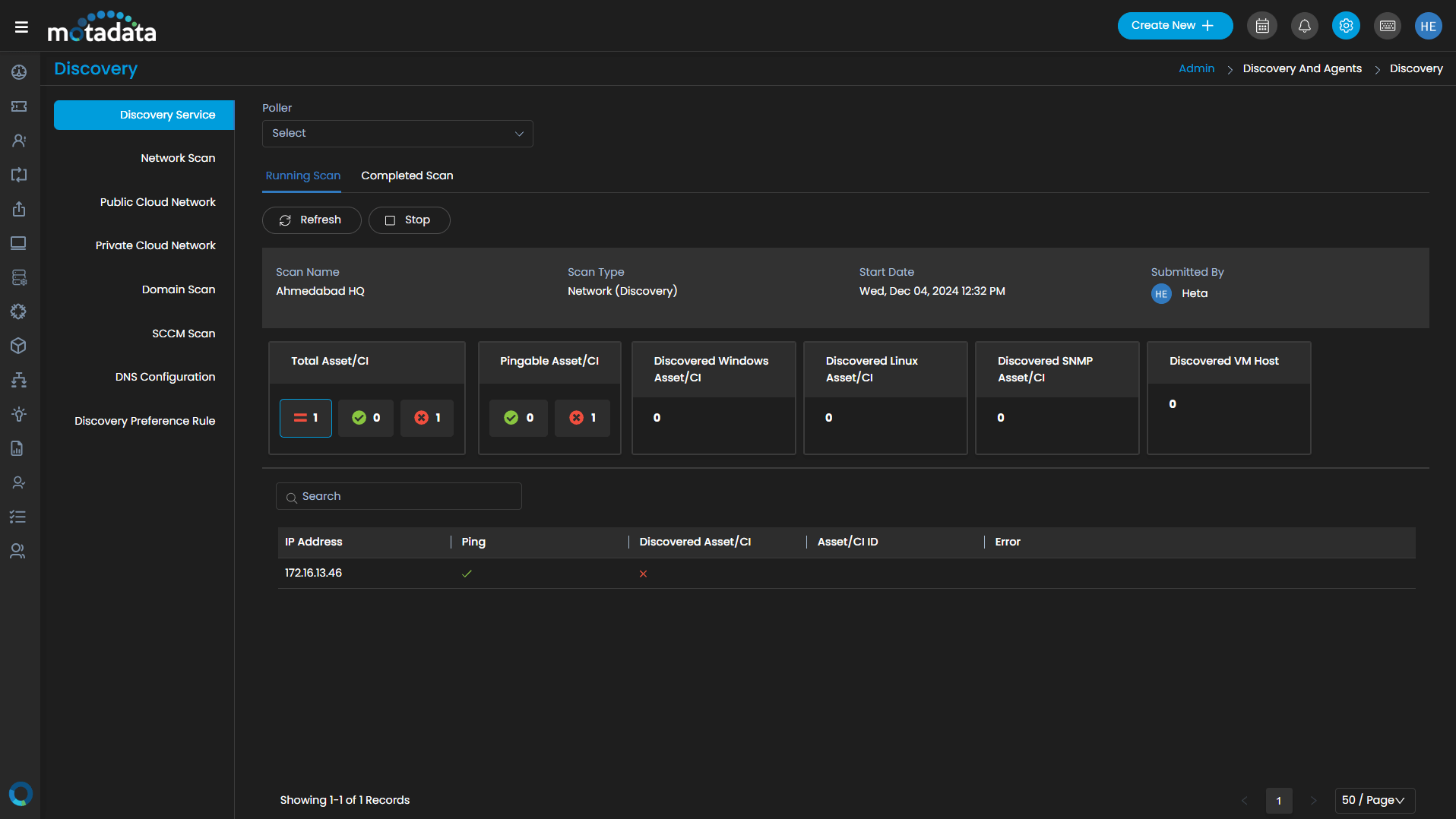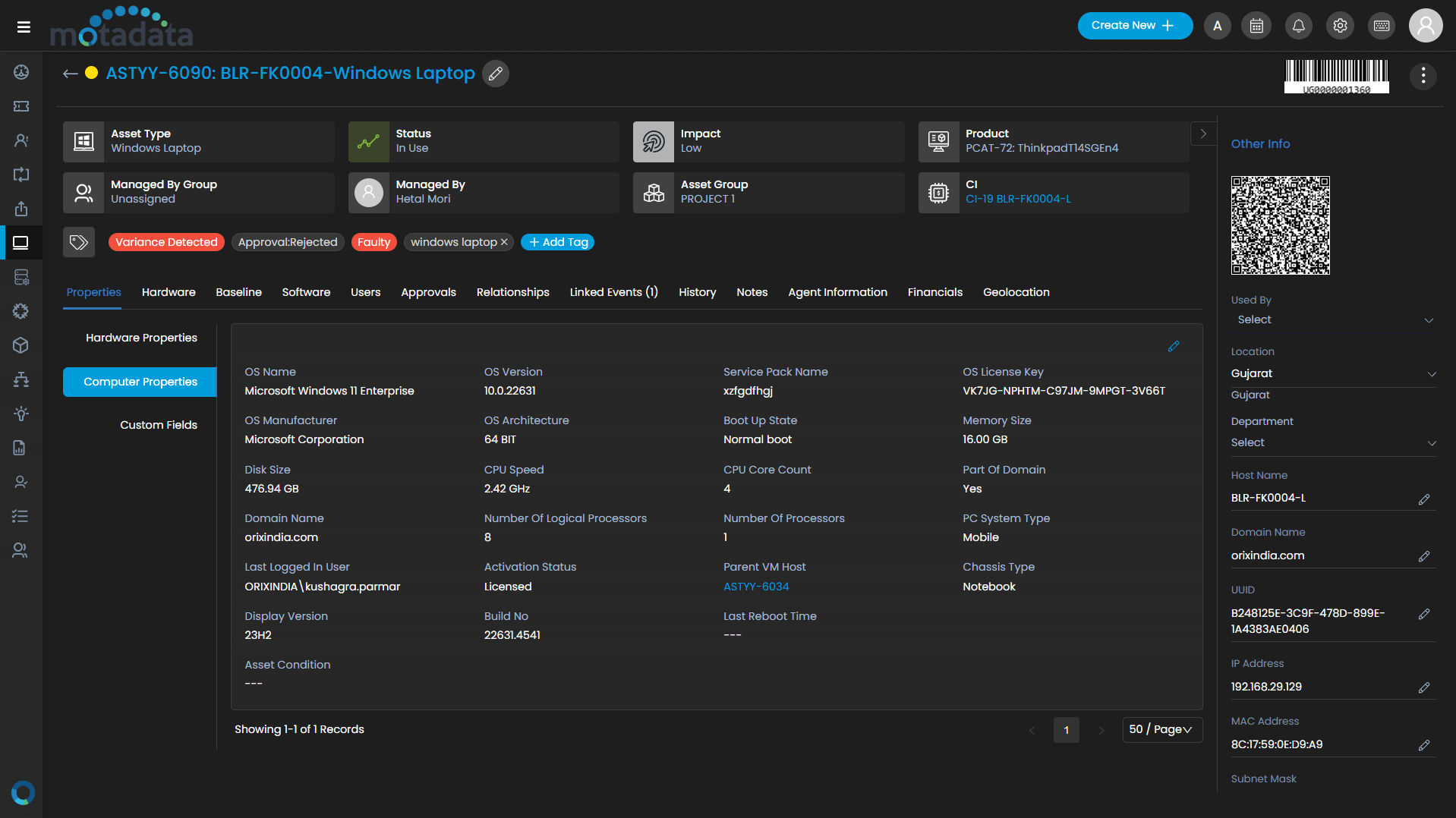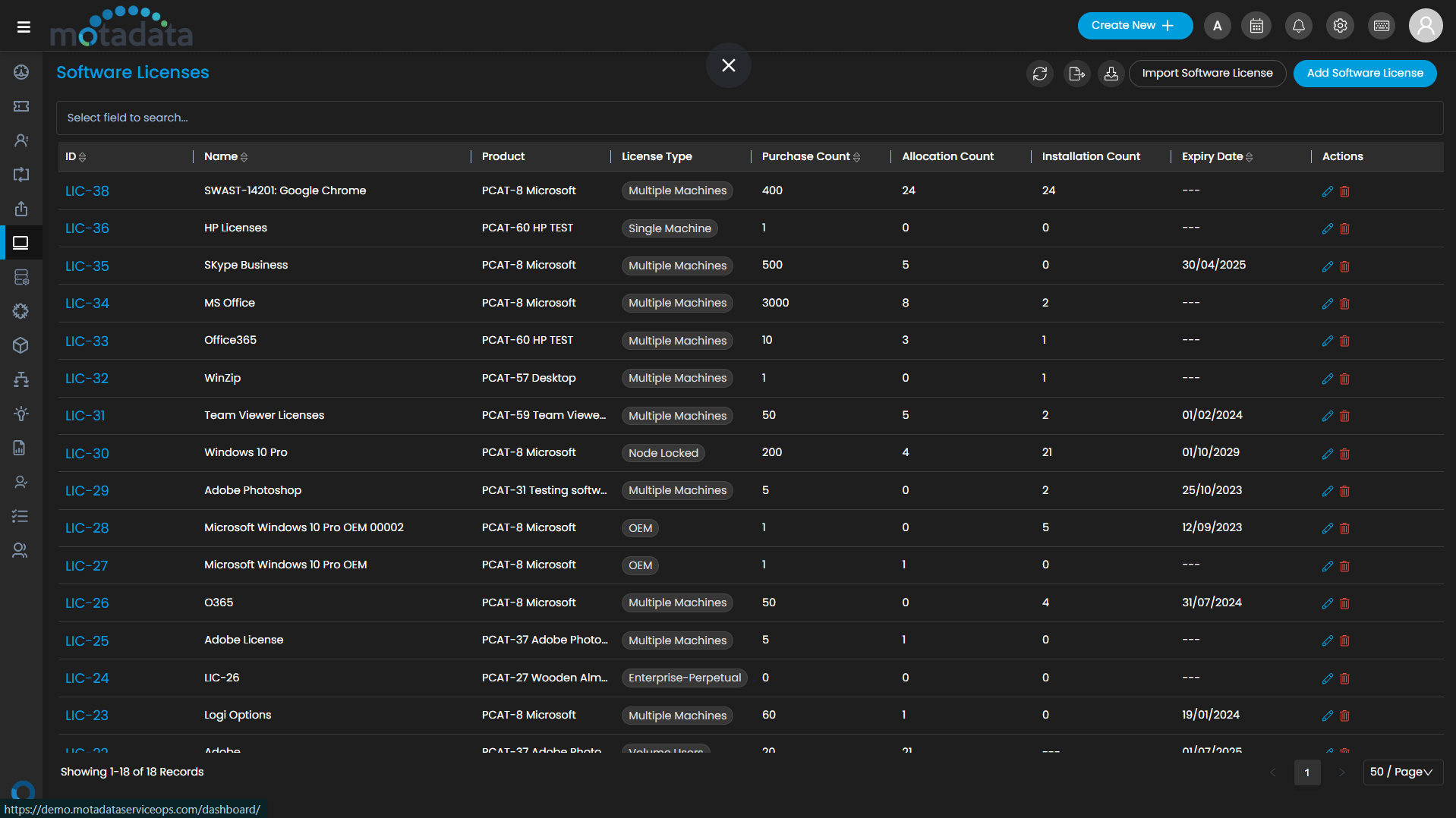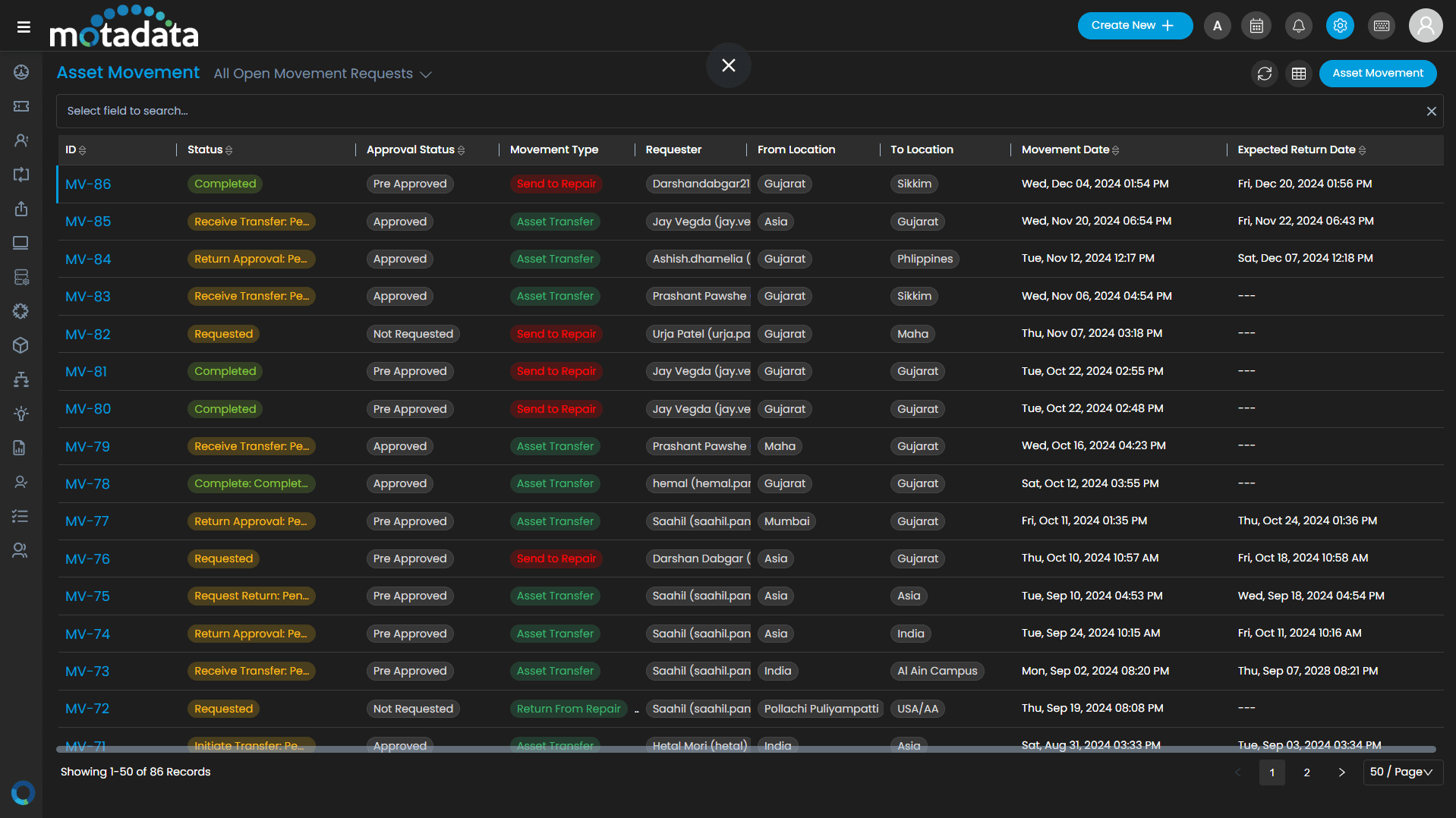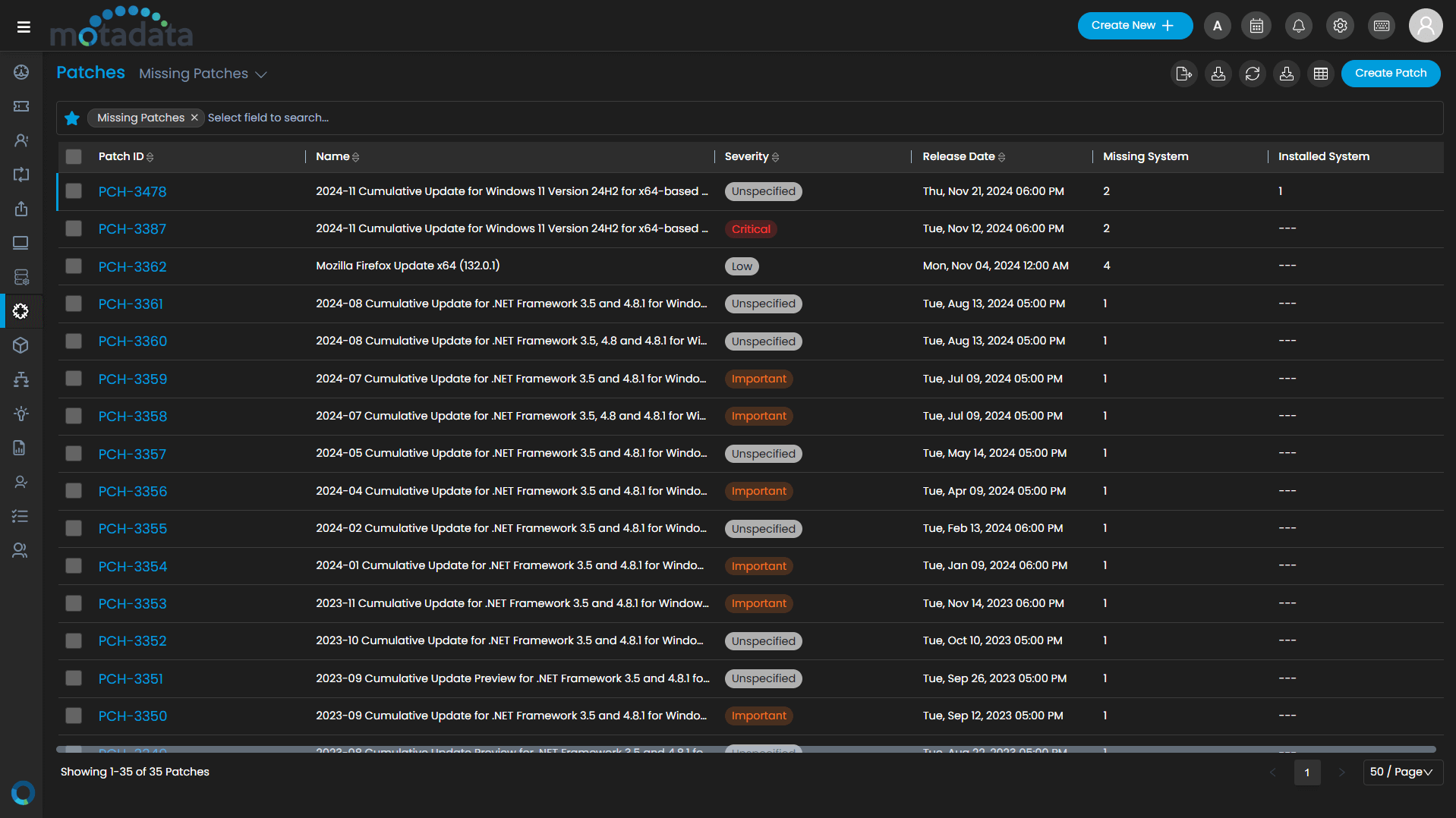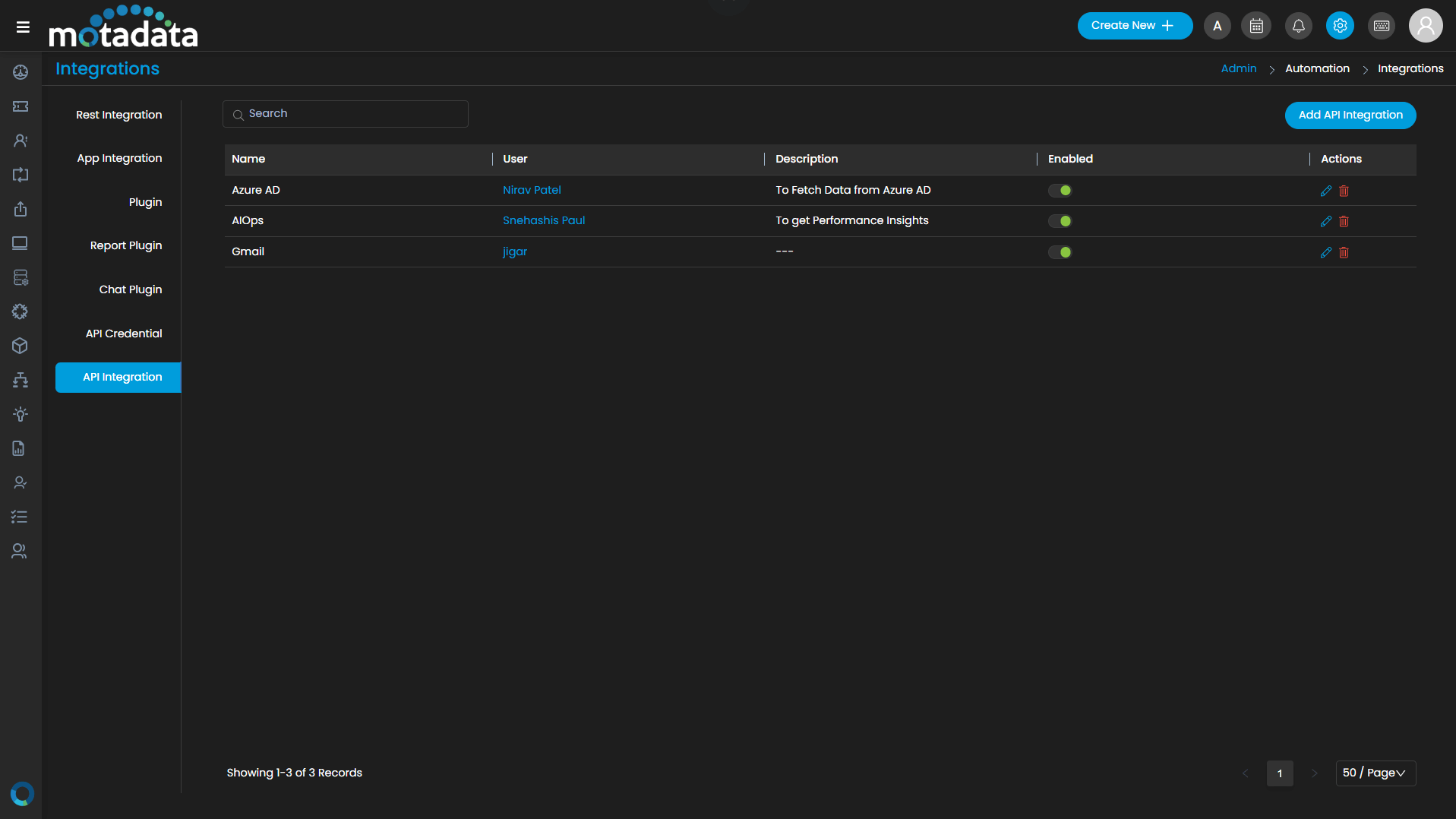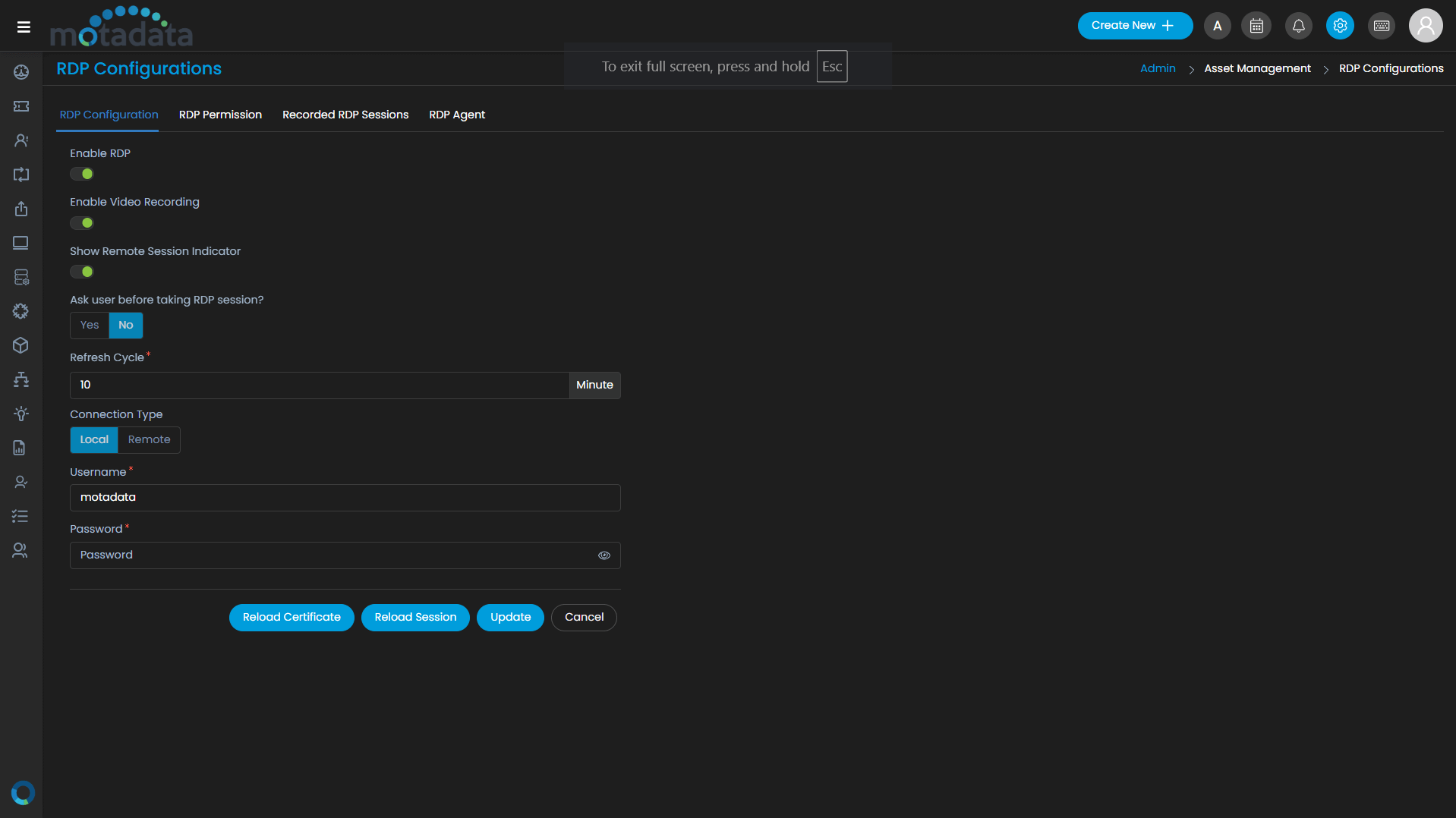What Is IT Asset Management (ITAM)?
IT Asset Management (ITAM) is the process of monitoring and managing an organization’s IT assets from purchase to disposal. It comprises monitoring, managing, and optimizing the physical and virtual resources in the IT environment. By implementing IT asset management software, organizations can ensure that their IT assets are safe, appropriately used, and following industry standards.
-
Procurement
When assets are acquired, the IT teams must ensure they align with organizational needs and budget. Only after proper inspection is the asset introduced within the organization’s infrastructure. -
Deployment
Once the assets are installed and configured for use, they are often integrated with other systems within the organization. The deployment process ensures that this is done efficiently without any hiccups. -
Maintenance & Utilization
An asset must be maintained, monitored, and optimized over its lifetime to guarantee peak performance and efficiency. -
Retirement or Disposal
When assets are no longer functional or usable, they must be securely retired, ensuring that any data is deleted and disposed of in compliance with environmental and data protection laws.
Software Assets
- Primarily focuses on managing software licenses, applications, and updates across the organization.
- Ensures that the software deployed complies with licensing agreements and avoids legal or financial risks.
- Optimizes software usage by ensuring the right software is assigned to the right users or devices.
- Supports efficient software versions, patches, and updates management to maintain security and performance.
Hardware Assets
- Focuses on tracking and maintaining physical devices such as servers, laptops, routers, and desktops.
- Ensures proper inventory management, maintenance, and lifecycle tracking of hardware devices.
- Aims to maximize the useful life of hardware assets by ensuring timely repairs, upgrades, and replacements.
- Helps in compliance with regulations regarding physical devices and their usage within an organization.
Importance of Asset Tracking and Monitoring
In business settings, asset tracking is crucial for the following reasons:
-
Accuracy
Organizations can ensure they have accurate information about their IT assets’ location, state, and condition by keeping a thorough and current inventory.
-
Cost Control
Asset tracking can help IT departments identify underutilized assets, eliminate pointless acquisitions, and maximize already-existing resources.
-
Compliance
Accurate tracking is essential for regulatory compliance, ensuring that the company complies with software license regulations, industry standards, and security procedures.
Role of IT Asset Management Software
By providing a single platform for tracking and managing the company’s whole IT inventory, an IT asset management program, often known as ITAM software, centralizes asset management. These resources aid in:
- Automate asset discovery across networks to make sure no assets are missed. Enhance decision-making and resource allocation by offering real-time asset consumption, health, and performance monitoring.
- Integrate with other IT systems, including helpdesk platforms, CMDB (Configuration Management Database), and monitoring tools, to give a comprehensive picture of the IT environment.
Benefits of IT Asset Management
By implementing effective asset management practices, organizations can:
-
Optimize Resource Utilization
To enhance resource allocation, determine if assets are being overutilized.
-
Cut Costs
Spend as little as possible on pointless software and hardware purchases.
-
Boost Security
Track and safeguard IT assets to protect critical data.
-
Assure Compliance
Follow internal guidelines and industry requirements.
-
Enhance Decision-Making
Acquire essential knowledge about the utilization and performance of IT assets.
IT Asset Management for Better Return on IT Assets
An ITIL-compliant PinkVERIFY Certified ITAM Solution that brings Transparency in Managing IT and Non-IT Asset Inventory to Avoid Wasteful Spending, Streamline New Asset Purchases, Manage Asset Life-cycles, and Meet all Compliance Requirements.
Asset Inventory
Track and maintain accurate information of all your IT and Non-IT assets and visualize them on a dashboard with robust asset inventory.
- Automatically find and track all your IT assets
- Manage and visualize asset dependencies
- Manage all aspects of HAM and SAM including licenses and contracts
- Create reports to track asset usage information
Key Benefits
- Asset Visibility
- Accurate Information
- Automatic Record-keeping
With ITIL Modules
Engage in full asset life-cycle management using ITIL processes from purchase till retirement.
- Capture incidents and relate them with assets for deeper analysis.
- Make changes to assets less chaotic with change management
- Troubleshoot your IT assets with problem management
- Create and maintain financial records of every asset
Key Benefits
- Faster Troubleshooting
- Maintain Inventory Health
- Promote Transparency
Asset Purchases
Maintain a true picture of your asset inventory and make data-driven purchase decisions to save costs.
- Create asset POs against an incident/request
- Maintain a list of preferred vendors
- Track financial details like depreciation of an asset
- Manage contract details and alerts on expiry
Key Benefits
- Faster Purchase Cycle
- Cost Visibility
- Promote Accountability
Asset Compliance
Control expenditure and avoid penalties by keeping a watch on to-be expired contracts and prohibiting unauthorized software to be run.
- Track utilization of all your software licenses
- Set alerts on asset changes according to a baseline
- Create usage reports of your assets
- Prohibit certain software from your infrastructure
Key Benefits
- Avoid Penalties
- Maintain Asset Security
Asset Inventory management
Maintain accuracy of your asset inventory by reducing manual interventions by automating updates based on events.
- Easily create workflows using a visual builder
- Create workflows to update asset inventory based on events
- Set multiple actions based on events
- Create multi-level workflows for advanced automation
Key Benefits
- Less Human Error
- Better Resource Utilization
- Save Time
The Pain Points of Traditional
IT Asset Management
Traditional IT asset management techniques, which frequently rely on antiquated software or manual procedures, might cause businesses to encounter serious difficulties.
Manual Tracking and Inventory Inaccuracies
One of traditional asset management’s most significant pain points is the reliance on manual tracking. While spreadsheets seem like easy options, they are prone to human error. Missing entries, outdated information, and inconsistencies can lead to an inaccurate asset inventory.
Motadata ServiceOps prevents this by automating asset detection and upgrades using our top-tier IT inventory management software. This eliminates the possibility of human error and guarantees that your asset inventory is always correct and current.
Limited Visibility & Control
As businesses and their IT infrastructure grow, keeping a clear picture of all the resources being used becomes more challenging.
With traditional asset management techniques, it can be practically hard to get a complete picture of the IT environment in big or distributed environments where assets may be spread across several departments, locations, or regions.
This issue is resolved by Motadata ServiceOps, which offers centralized, real-time access to asset data from throughout the entire company. It guarantees that you always have a comprehensive image of your IT environment, regardless of whether you manage software or hardware.
Inefficient Resource Utilization
A common issue with traditional asset management is the inability to fully optimize resource allocation. Organizations often fail to track how assets are used, leading to inefficiencies such as over- or under-provisioning resources.
Tracking asset utilization in real-time with Motadata ServiceOps can provide the information you need to optimize resource deployment. Our automated lifecycle management software helps find areas where resources can be shifted to increase overall efficiency and guarantees that assets are used to their maximum potential.
Increased Security Risks
When IT assets are poorly managed, security risks increase. Inaccurate inventory records or untracked assets leave organizations vulnerable to various threats.
For instance, obsolete software or unmonitored hardware might not have the required security upgrades, leaving gaps that hackers could exploit. Furthermore, if an asset’s lifecycle is not tracked, private information might remain on devices after they are disposed of, raising the possibility of data breaches.
With our asset inventory management software, you can thoroughly monitor any asset’s condition, health, and compliance report. This enables you to benefit from audit trails, asset change tracking, and automatic software updates to keep your company ahead of possible security risks while preserving end-to-end compliance.
Time & Cost Inefficiencies
Finally, traditional asset management can lead to significant time and cost inefficiencies. The manual processes of tracking assets, updating records, and generating reports often require considerable labor, slowing down IT operations.
By automating asset management duties, Motadata’s Asset Tracking Software reduces the time spent on manual procedures and the expenses related to inefficiencies. By implementing automated warnings, reports, and tracking capabilities, you can ensure that IT staff aren’t distracted by administrative overheads and can concentrate on high-value jobs.
Key Features of Motadata ServiceOps Asset Management Software
Motadata ServiceOps Asset Management Software is designed to give organizations a comprehensive solution to manage IT assets throughout their entire lifecycle. From automated asset discovery to real-time monitoring, our enterprise asset management software simplifies all aspects of asset management with advanced features like:
Key Factors to Consider Asset Management Software
Below are the most important factors to consider when choosing the ideal asset management solution for your business:
How Motadata ServiceOps Asset Management Transforms Your IT Operations
Efficient asset management is at the heart of successful IT operations
As organizations grow, the complexity of managing assets, ensuring optimal usage, and maintaining security increases exponentially.
-
Automated Asset Discovery and Cataloging
Whether through agent-based, agentless, or network scanning methods, our solution captures detailed data about every asset in your infrastructure. This proactive approach eliminates guesswork, ensuring CIOs and IT managers can make informed decisions based on a real-time asset repository.
-
Real-Time Asset Tracking and Monitoring
With Motadata ServiceOps, you gain real-time visibility into your asset health, performance metrics, and usage trends. This capability isn’t just about keeping tabs—it’s about enabling predictive maintenance, reducing downtime, and extending the lifecycle of critical infrastructure. CIOs can focus on driving innovation, knowing their assets are under control.
-
Enhanced Resource Utilization and Cost Optimization
By providing insights into underutilized or overutilized assets, Motadata ServiceOps empowers businesses to rebalance resources intelligently. For decision-makers, this translates to measurable cost savings and more strategic allocation of IT budgets.
-
Strengthened Security Posture
Motadata ServiceOps supports vulnerability assessments, incident response, and compliance audits by providing a clear view of your asset landscape. Features like asset change tracking and audit trails ensure your IT environment is always secure, helping you avoid potential breaches and compliance challenges.
-
Simplified IT Operations and Streamlined Workflows
Motadata ServiceOps doesn’t just improve visibility—it transforms operations. Our solution offers a unified view of your IT ecosystem by automating manual tasks and integrating seamlessly with tools like CMDB and helpdesks. This integration breaks silos, improves collaboration, and streamlines workflows.
The result? Simplified operations that free up IT teams to focus on strategic goals rather than firefighting routine issues.
Drive Business Success with
IT Asset Management Platform
30% Reduction in Expenses
Single source of truth for IT asset inventory reducing unnecessary expenditure.
20% Increase in Efficiency
Manage asset life cycle with intelligent automation from procurement to disposal.
15% Reduction in Compliance Violation
Get an accurate view of software utilization and watch for overutilization.
Motadata ServiceOps
Your Choice of
Deployment
Never Lose Track of your IT And Non-IT Assets with Automatic Discovery.
- Policy-Driven Automated Asset Baseline
- Built-In Multi-Function Remote Desktop
- Automatic Uninstallation of Prohibited Software
- Asset Movement and Gate-pass Support
Improve Your
Service Operation By 30%
Explore Asset Manager
An ITIL-aligned ITAM Solution that helps Organizations Automate the End-to-end Life-cycles of both IT and Non-IT Assets across the Organization.
Try ServiceOps for 30 Days
Download our software free of cost for 30 days
Schedule Demo With Our Expert
Book a slot in our calendar and experience ServiceOps live.
Motadata ServiceOps
Built For Digital Enterprise
An AI-enabled platform that empowers IT organizations to rapidly adopt changes across people, processes, and technology to significantly improve service delivery.
By TEAM
Learn how different teams can leverage our platform to improve their productivity and streamline their internal processes.
By USECASEs
Learn about the problems that our AIOps and ServiceOps platform can solve and the benefits they can provide.
Do You Have Any Questions? Please Ask, We Are Ready To Support
If your question is not listed here, please feel free to reach out.
CMDB (configuration management database) is a repository that serves as a data warehouse, holding information about your IT environment including the elements needed to offer IT services. A CMDB stores lists of assets or configuration items and the relationships between them. By facilitating you to manage data of numerous IT components from a single location, the configuration management processes along with CMDBs are at the center of IT operations.
CMDBs can help your organization lower an asset’s TCO, minimize infrastructure downtime, reduce the cost of operations and asset maintenance with automated tasks, provide accurate records of service codes and billing to finance teams, adhere to regulatory compliance standards, and execute root cause analysis to identify CI issues and resolve them.
IT asset management software is critical for corporate growth in a variety of ways as it can help detect and avert several possible IT infrastructure issues.
Tracking asset lifecycles and determining secure methods to upgrade or replace them through asset management software can enhance productivity while also preventing security breaches and asset theft. Improved asset management can help save costs associated with asset maintenance. IT asset management software also assists in adhering to industry regulations and ensuring compliance. Furthermore, it can account for the disposal of assets properly, ensuring that your critical information is not compromised.
Software License Management (SLM) should be a critical part of your overall ITAM or ITSM strategy due to its many benefits. SLM reduces the expense and difficulty of rapidly obtaining and deploying more licenses when a deficit is identified by keeping the number of licenses paid for closely aligned with the number your organization requires.
Older software versions with outdated security features serve as convenient entry points for ransomware and other viruses. Furthermore, keeping outdated software versions operational and safe might tax IT resources that are already stretched thin. Effective SLM can improve cybersecurity by detecting, reducing, and mitigating vulnerabilities and threats. Additionally, if your business undergoes regular audits, SLM can help overcome challenges like over-budget expenses, fines, etc. by ensuring licensing compliance.
The primary difference between the two asset discovery methods is that the agent-based asset discovery method must have agents installed on each target machine, but the agentless discovery technique needs no installation.
With agent-based asset discovery, you can monitor a broader range of metrics and gain deeper insights into the IT asset inventory and performance while you can track a relatively lesser range of metrics with agentless discovery, resulting in less in-depth insights on inventory and performance.
The agent-based discovery approach has little network overhead since it is less reliant on the network, but the agentless method consumes more bandwidth and always requires network access.
Agent-based asset discovery necessitates periodic patching, monitoring, and troubleshooting of agents on the target system, whereas agentless asset discovery necessitates no maintenance on the target system.
Motadata ServiceOps can discover and manage a wide range of IT assets, such as physical hardware (computers, servers, networking devices), software (licenses, applications), virtual assets (cloud instances, virtual machines), and other critical IT infrastructure components.
Motadata ServiceOps uses advanced automated discovery techniques, such as network scanning, agent-based, and agentless discovery, to capture real-time data on assets across the network. This ensures accurate and up-to-date asset inventory, minimizes human error, and eliminates manual tracking.
Absolutely! Motadata ServiceOps offers robust software metering capabilities. It tracks software installations and usage across your IT infrastructure. This helps ensure compliance by automatically monitoring usage, detecting over-deployed software, and generating alerts for any potential violations of license agreements.
Yes, Motadata ServiceOps can integrate seamlessly with other IT management tools, such as CMDB, helpdesk, and ITSM platforms, to provide a unified view of your IT assets.

